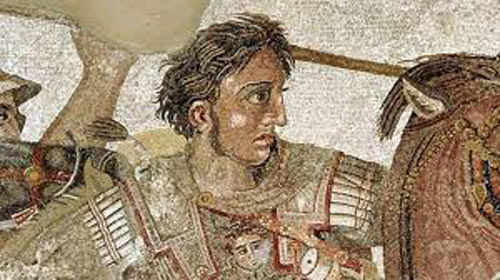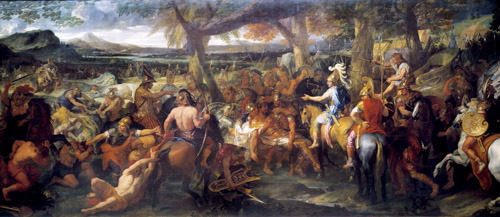
Alexander fought wars in almost all regions of Pakistan
Taj Nabi Khan

Islamabad: After the death of his father, Philip II of Macedon, in Virgina, Macedonia, Greece, ‘Alexander the Great’ had gained control of the throne when he was hardly 21 who later set off on an expedition to conquer the whole world.
Primarily he left Macedonia to take revenge against the Persian Empire, Darius. But his ambitious desire of conquest expeditions in different parts of the globe had made him the proclaimed king through the present-day seventeen countries.
While taking the route of invasion, he had also traveled to different regions of current Pakistan including the mountainous areas of Khyber Pakhtunkhwa, the plains of Punjab, down the Indus River (Sindh) and Makran deserts of Balochistan.
Afterwards, he left for Babylon (Iraq) where he died at the age of 32 years.Alexander had entered Pakistan through the Khyber Pass from Jalalabad, Afghanistan.
He along with his army had traveled to the northern mountainous regions of the country to subdue the people of the hidden valleys around 2300 years ago.
However, he had faced continuous trouble from the mountainous tribes of the region. From there onwards with the support of King Takshashila-Ambhi ,King Ambi, he invaded Taxila, the magnificent city of the time, located at a distance of 20 kilometers from the modern capital city of Islamabad.
The British historian, Michael Wood, has also broadcasted a documentary series on British Broadcasting Corporation (BBC) in four episodes to retrace the travels of Alexander the Great under the title of “In the Footsteps of Alexander the Great”.
The series consisted: “Son of God, Lord of Asia, Across the Hindu Kush” and “To the Ends of the Earth” in 1998.
The effort was meant to trace the entire routes of the journey taken by Alexander and his soldiers. Even today several cities of the subcontinent are bearing the legacy of the name of Sikandar (Alexander).
Likewise, Greek coins and other cultural artifacts in the Taxila museum are also representing the rich heritage of the Greek era.
The double headed Eagle shrine in Taxila also shows the influence of Greeks.
Though Alexander could not conquer the whole world, he invaded some of the most challenging terrains of the globe. The long series of his historical invasions from Macedonia to Turkey, Zargros to Persepolis, and golden road to Samrkand and Pakistan has come to end in Babylon (Iraq) where he died of fever.
Throughout his journey, on the way, he had come across the places: Lebanon, Gaza, Egypt, Iraq (Babylon), Iran (Persia), India, Afghanistan and Pakistan.
The long travel involves the crossing of national boundaries, battle lines in mountains and civil wars, goat paths and deserts.
It is said that on the banks of Jhelum River (to Greek the Hydaspes) Alexander had faced one of the toughest battles from Porus, the then ruler of the Punjab. Porus fought bravely against the Greeks killing Alexander’s horse. But the war was won by the Greeks due extraordinary skills of war tactics of Alexander.
In the vicinity of war, two towns were named after Alexander’s horse as Alexanderia and Bucephalus. Similarly, Alexandria Monument was built in place where the Battle of Hydaspes was fought.
